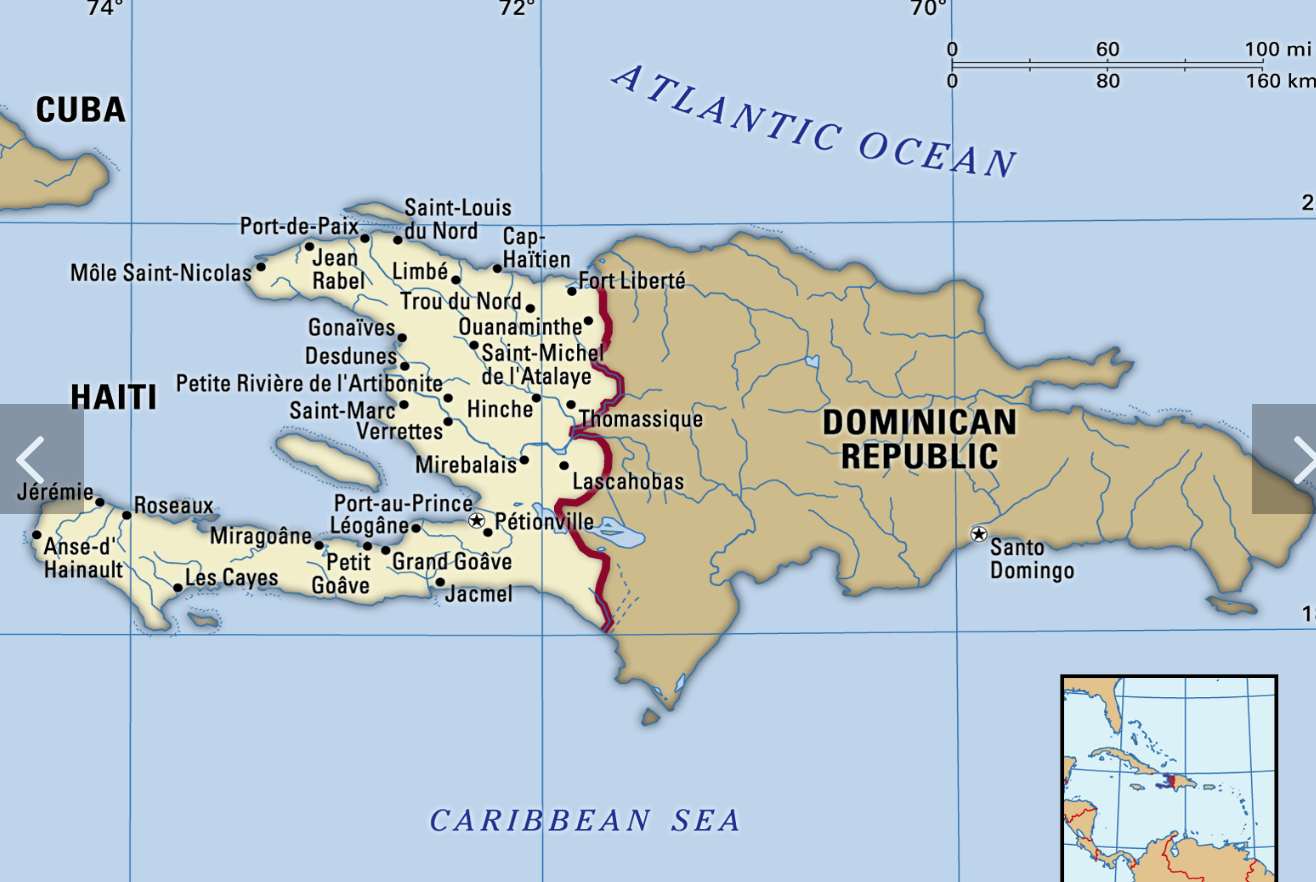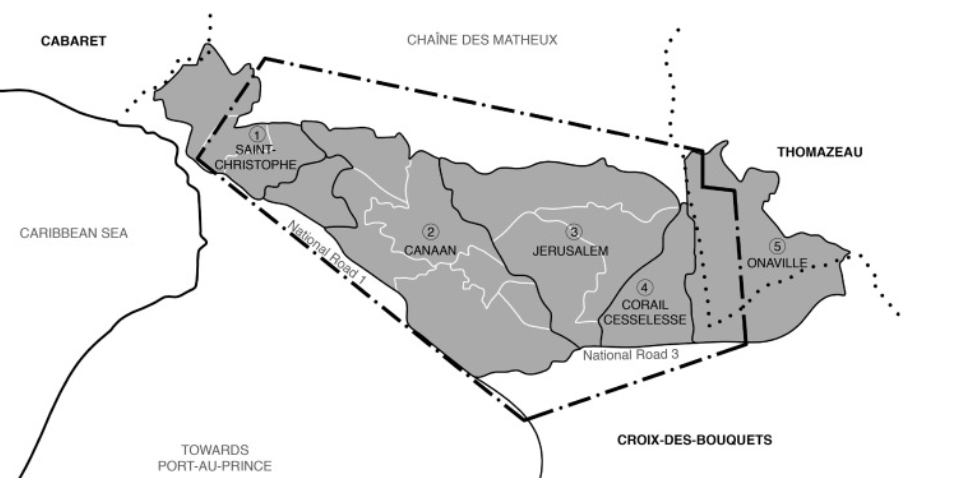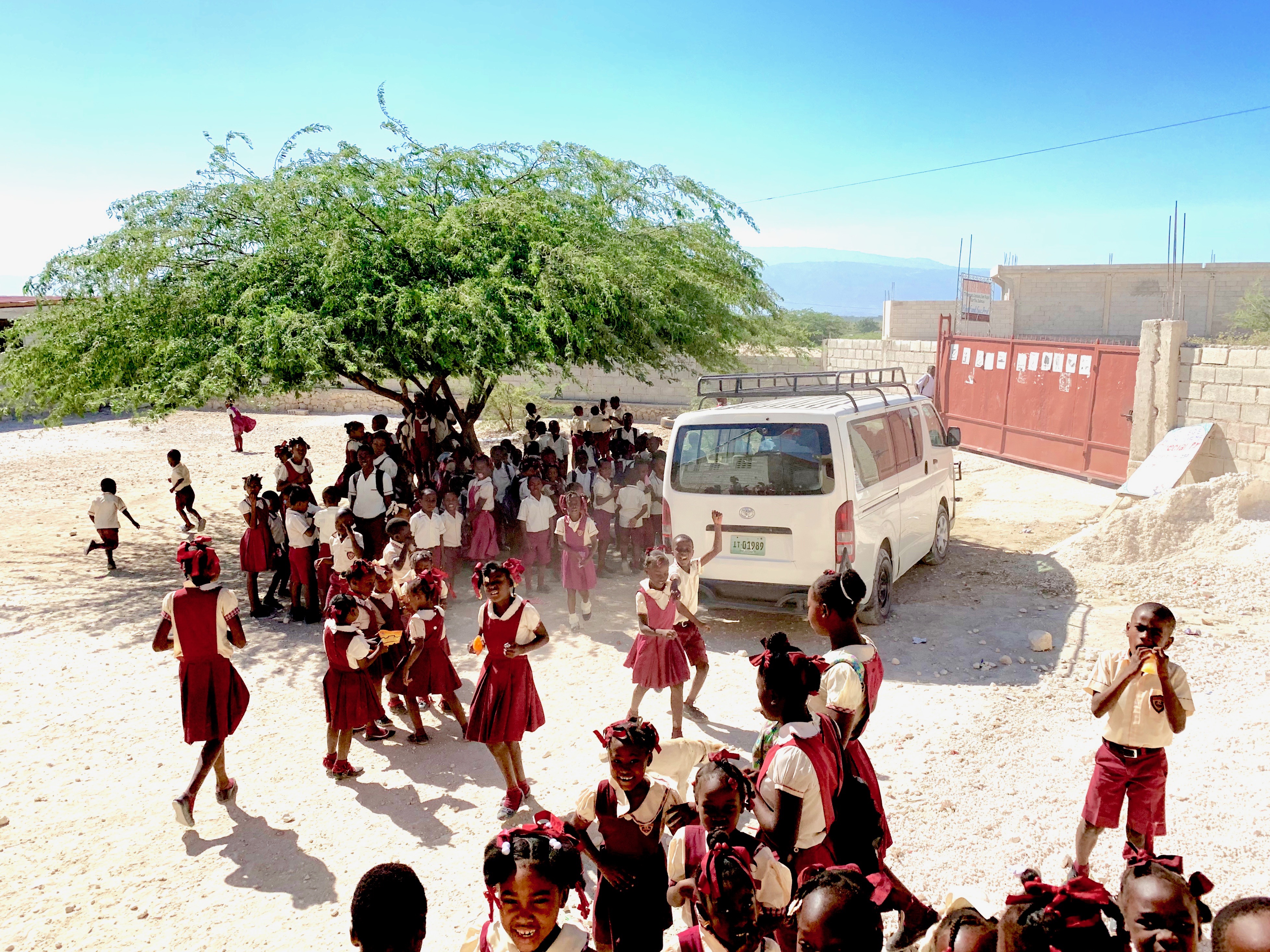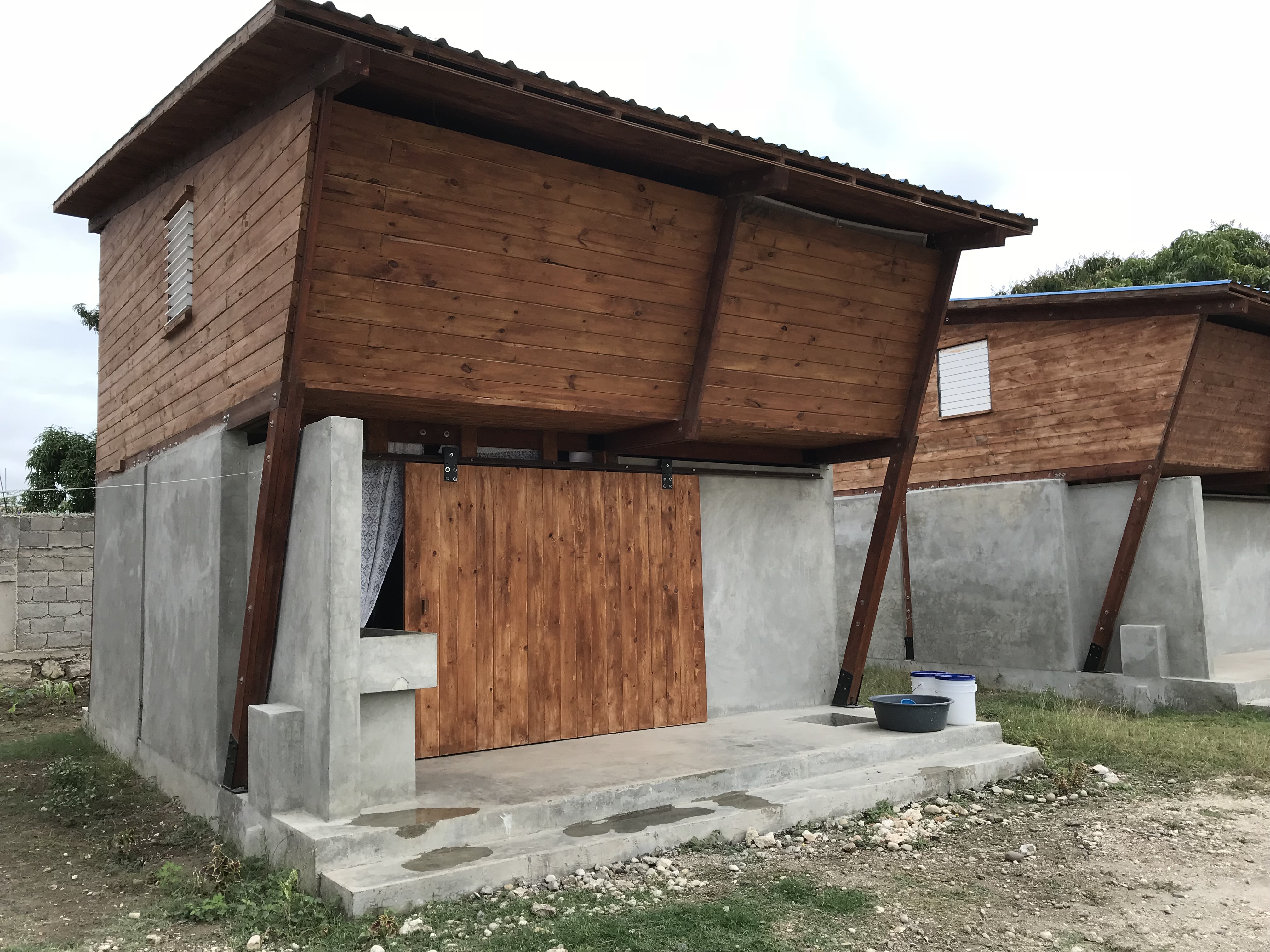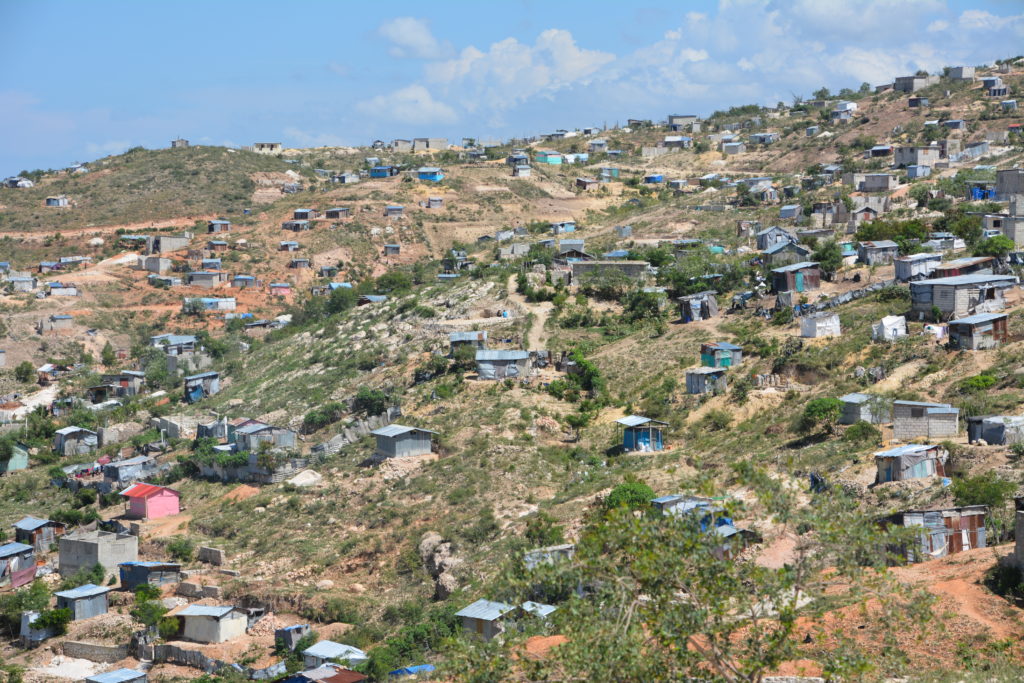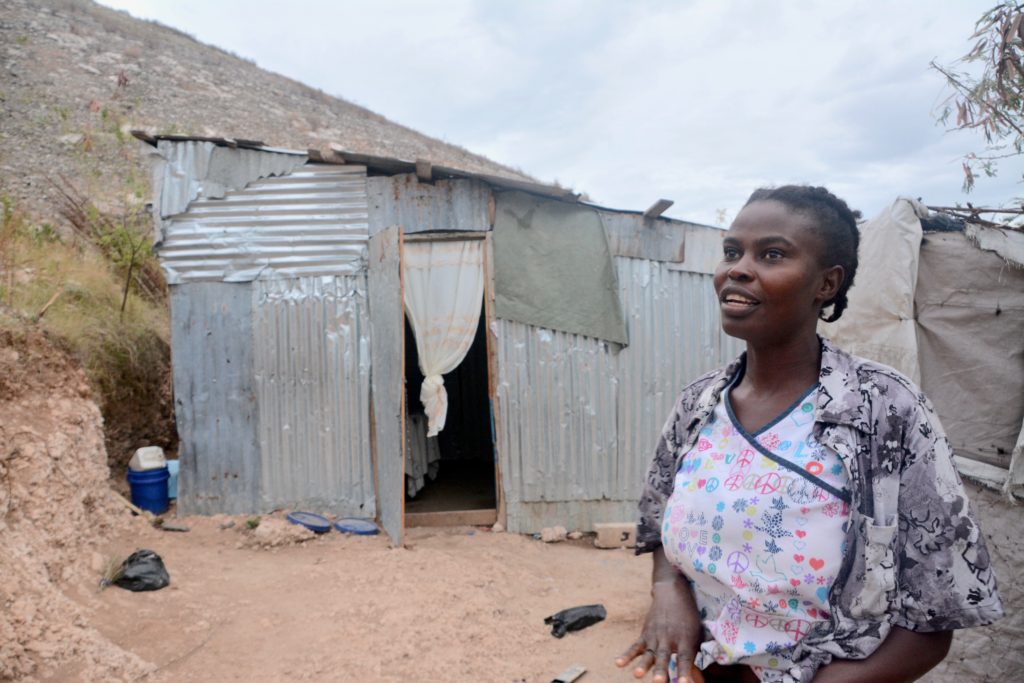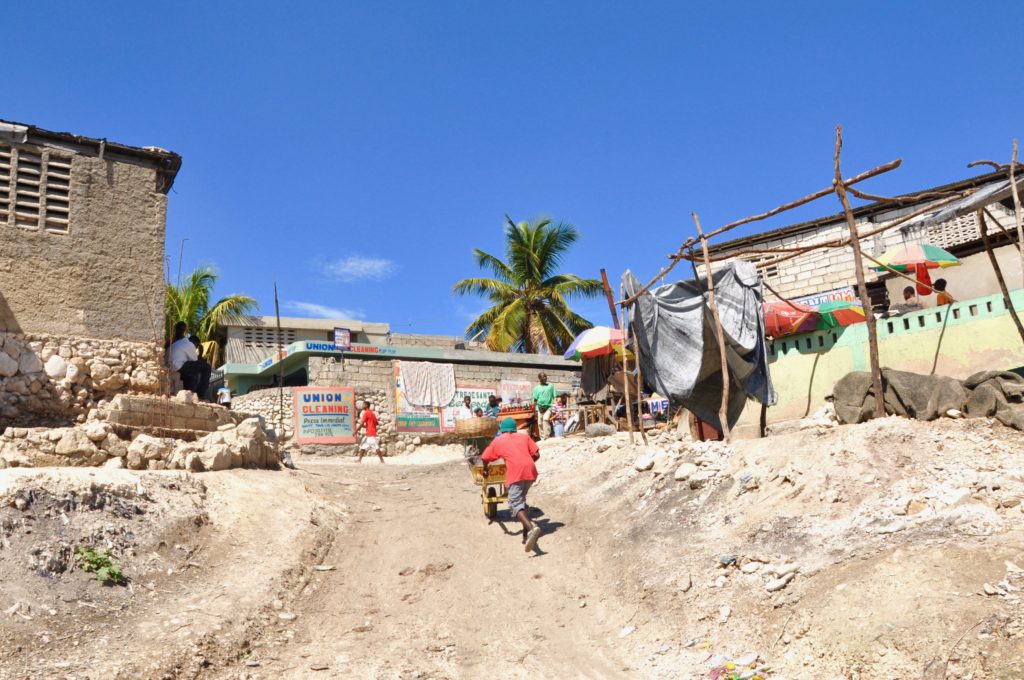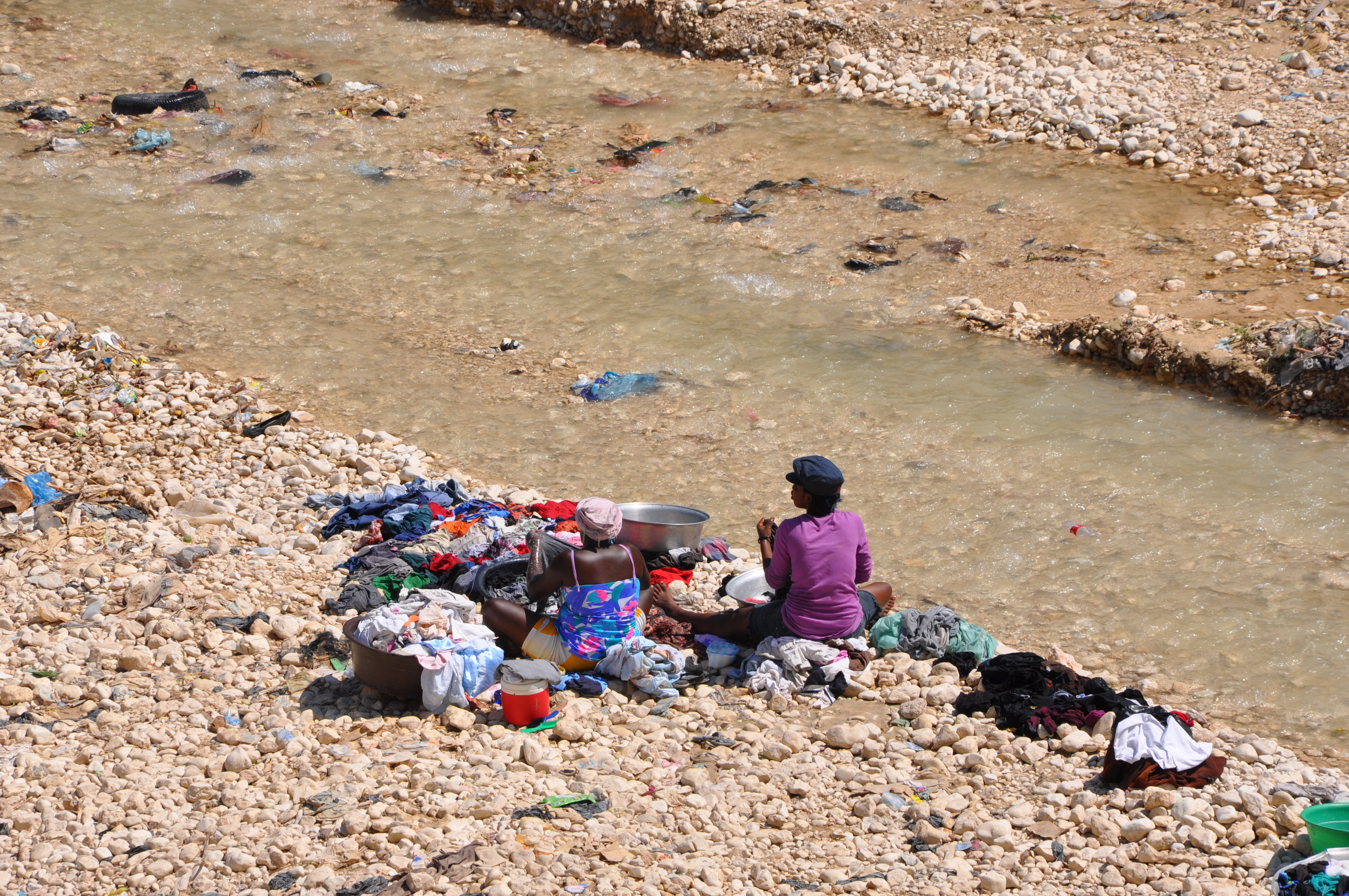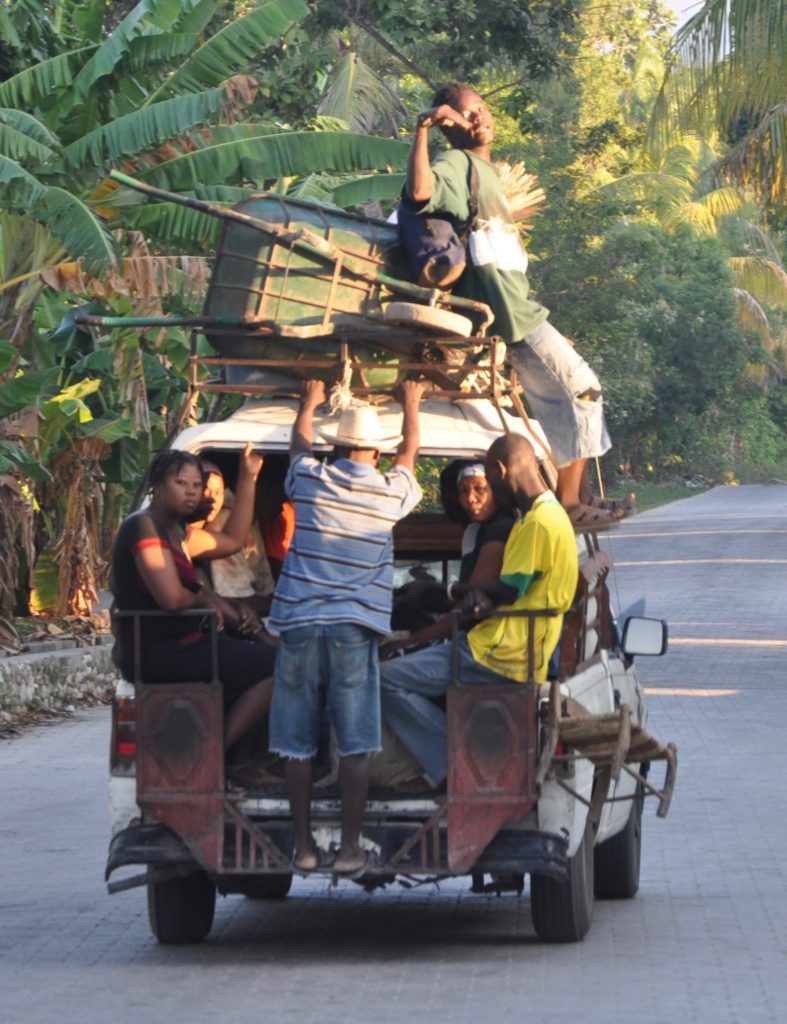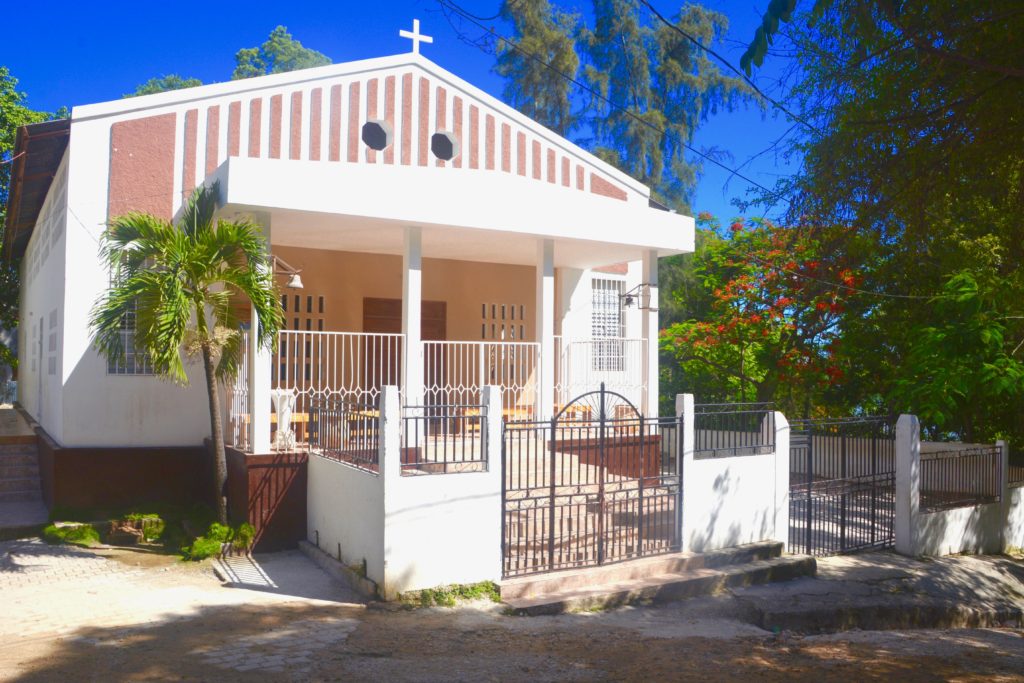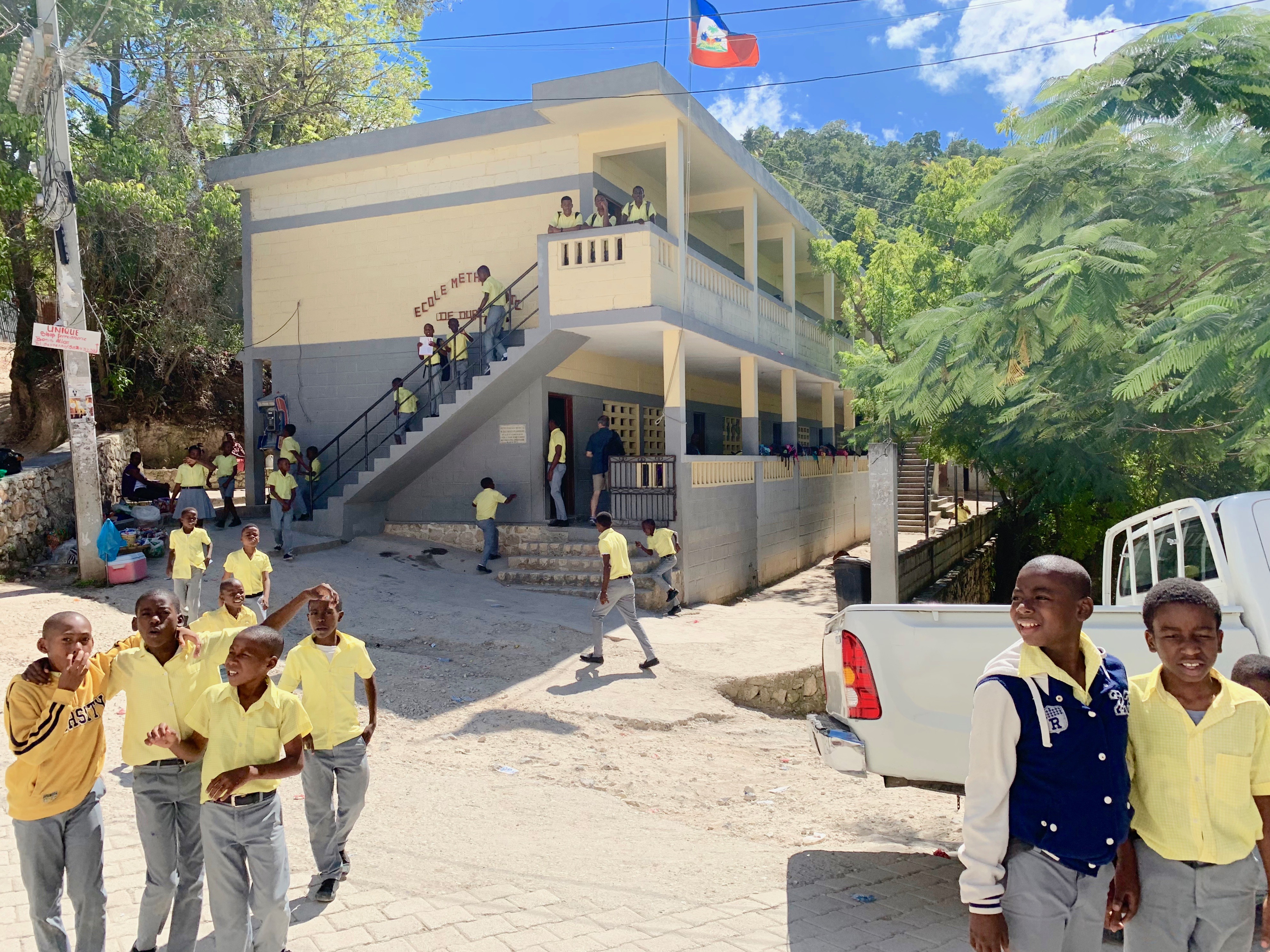There are schools on nearly every block in and around Haiti’s capital, Port au Prince. Privately owned or non-government schools make up 90 % of all schools in Haiti.; students must pay tuition. For ten years, PieH has provided scholarships for youth in Port Au Prince and the surrounding area.
The Port au Prince area, where most of our students live and attend school, has approximately one million residents, with the metropolitan area estimated to have a population of 2.5 million.

The country of Haiti shares an island with the Dominican Republic 
Blue circles indicate where PieH students live and go to school.. 
Magnified area of the hillside communes of Canaan, Jerusalem, and Onaville

The 2010 earthquake destroyed Cathédrale Notre-Dame de L’Assomption in Port au Prince. 
Many women sell wares in the streets to support their families. 
Walking to church Sunday morning in Port au Prince
Croix de Bouquets (population 300,000), where several of PieH students live, is eight miles northeast of Port au Prince. The commune is world-famous for its artist community, specializing in metal sculptures. Many visitors know the artists’ community as “Tin City.” Croix de Bouquets is a crowded and poor metropolitan area. Two PieH’s students’ families moved to Croix de Bouquets from a tent city because they had an opportunity for improved housing.

A school yard in Croix de Bouquets 
A PIeH family of six was able to acquire this home in Croix de Bouquet with help from an NGO and a U.S. family 
A worker “Tin City
Over a third of our students live on a hillside of Canaan, Jerusalem, and Onaville (suburbs of Croix de Bouquets). After the 2010 earthquake devastated areas of Haiti and displaced 1.5 million Haitians, President René Préval declared public 18,000 acres. Not deterred by the rough terrain, half of which is in a flood zone, tens of thousands of Haitians flocked to the hillside to claim a plot of land, a dream most did not believe would ever be possible. Today, about 300,000 people live on the hillside. It has become the most significant construction effort ever led by Haitians.

Schoolyard in Onaville, where several PieH students attend 
Canaan, where 200,000 displaced Haitians moved after the earthquake. 
Eurlande is so proud of the home she built on the hillside commune of Jerusalem.
Carrefour is another residential community outside of Port au Prince, with a population of 500,000. Although it is only 7 miles west of Port au Prince, it can take well over an hour to drive due to traffic congestion and inadequate road conditions. As in Port au Prince, Carrefour is a high crime area. Recently, a PieH student’s parent was caught in the middle of gun violence and inadvertently shot in the foot. He is doing well from the shooting but does not have a safe place to live with his family.

Entering the city of Carrefour 
Laundry day 
Taking goods to the market. Privately owned “tap-taps” are traditional mode of transportation in Haiti.
Ten PieH students attend school in the village of Duplan, about eight miles south west of Port au Prince. Duplan is one of the oldest Methodist church communities in Haiti. A special dispensation was granted by the Haitian government (an official Roman Catholic nation at the time) in the early 19th century that Methodist missionaries could establish churches if they also established schools in those communities. The Duplan Methodist School now educates 400+ K-12th grade students, and the church serves hundreds more in the area. PieH recently received two grants from the Missouri Methodist Conference to upgrade toilets, provide clean water, and restructure a community medical clinic on the church’s property.

Ten PieH students who attend Duplan Methodist School 
Duplan Methodist Church 
Duplan Methodist School
Most of these locations are within 10 miles of Port au Prince, but due to poor road conditions, traffic congestion, and protests, it can often take an hour or more to reach one of these communities. Your support is critical in helping Haitians lift themselves out of poverty. Please consider making a donation that will go toward providing scholarships for Haitian you.

